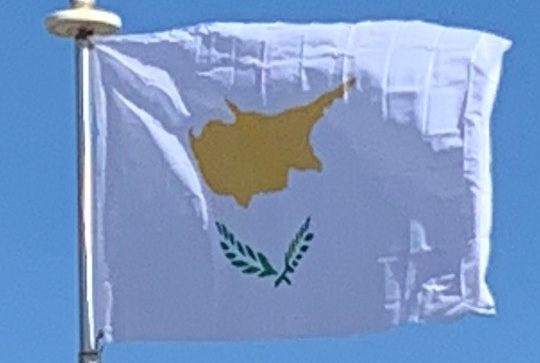The events of the summer of 1974 dominate the politics on the island, as well as Greco-Turkish relations. Around 150,000 settlers from Turkey are believed to be living in the north—many of whom were forced from Turkey by the Turkish government—in violation of the Geneva Convention and various UN resolutions.

The Turkish invasion, the ensuing occupation and the declaration of independence by the TRNC have been condemned by United Nations resolutions, which are reaffirmed by the Security Council every year. The last major effort to settle the Cyprus dispute was the Annan Plan in 2004, drafted by the then Secretary General, Kofi Annan. The plan was put to a referendum in both Northern Cyprus and the Cypriot Republic. 65% of Turkish Cypriots voted in support of the plan and 74% Greek Cypriots voted against the plan, claiming that it disproportionately favored the Turkish side. In total, 66.7% of the voters rejected the Annan Plan V. On 1 May 2004 Cyprus joined the European Union, together with nine other countries. Cyprus was accepted into the EU as a whole, although the EU legislation is suspended in Northern Cyprus until a final settlement of the Cyprus problem. In July 2006, the island served as a haven for people fleeing Lebanon, due to the conflict between Israel and Hezbollah (also called “The July War”).

Efforts have been made to enhance freedom of movement between the two sides. In April 2003, Northern Cyprus unilaterally eased border restrictions, permitting Cypriots to cross between the two sides for the first time in 30 years. In March 2008, a wall that had stood for decades at the boundary between the Republic of Cyprus and the UN buffer zone was demolished. The wall had cut across
in the heart of Nicosia and was seen as a strong symbol of the island’s 32-year division. On 3 April 2008, Ledra Street was reopened in the presence of Greek and Turkish Cypriot officials. North and South relaunched reunification talks on 15 May 2015.

Geography:
Cyprus is the third largest island in the Mediterranean Sea, after the Italian islands of Sicily and Sardinia (both in terms of area and population). It is also the world’s 80th largest by area and world’s 51st largest by population. It measures 240 kilometers (149 mi) long from end to end and 100 kilometers (62 mi) wide at its widest point, with Turkey 75 kilometers (47 mi) to the north.
Other neighboring territories include Syria and Lebanon to the east (105 and 108 kilometers (65 and 67 mi), respectively), Israel 200 kilometers (124 mi) to the southeast, Egypt 380 kilometers (236 mi) to the south, and Greece to the northwest: 280 kilometers (174 mi) to the small Dodecanesian island of Kastellorizo (Megisti), 400 kilometers (249 mi) to Rhodes and 800 kilometers (497 mi) to the Greek mainland. Sources alternatively place Cyprus in Europe, or Western Asia and the Middle East.
